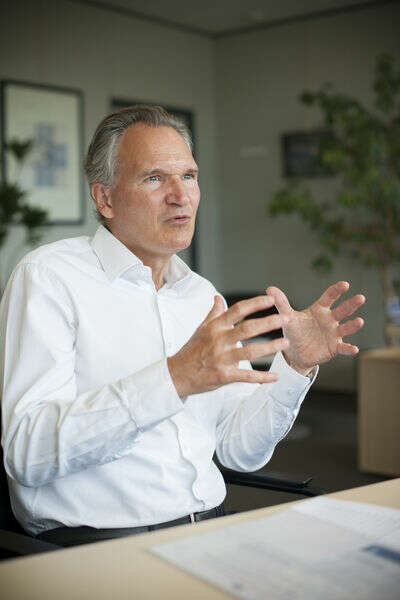
CESSDA asks ten questions to Robert-Jan Smits
Robert-Jan Smits is the open access envoy of the European Commission after eight years as Director-General of DG Research and Innovation. Next year he will move to Eindhoven to become Chair of its Technical University.
He was also involved in preparing and setting the European Open Science Cloud that was formally launched on 23 November in Vienna.
Recently, he presented Plan S on open access to publications together with Science Europe.
CESSDA asked Robert-Jan Smits to answer a few questions.
What factors of your Plan S are decisive to induce a real transition?
Researchers receiving research grants from the funders signed up to Coalition S must publish in compliant ways with Plan S. Guidance on the implementation of Plan S has also been made available. A few key elements are that authors retain copyright, there is no embargo period and the CC-BY 4.0 License is required for scholarly articles.
Is the two-year timeframe set by Plan S sufficient for journals to become compliant open access journals or platforms?
There are already many compliant OA journals as listed in the Directory of Open Access Journals (DOAJ). Don’t forget that many OA initiatives have been taken over the last decades following for example the Berlin declaration in 2003. Also the fact that the European Council committed in 2016 to immediate open access by 2020 has led to new initiatives. Plan S will give a further boost to the market of OA journals and platforms.
What does the future financial business model for science publishing look like?
Plan S does not advocate one specific model for OA. There are many different ways to achieve OA and we encourage innovative new models. It is for the science publishers to decide on the models.
a) How can we avoid a “pay-to-play” system where only the best-funded researchers and institutions can be published in the mandated journals?
Plan S principle states: "Where OA Publication fees are charged, these will be covered by Funders or universities". It is acknowledged that all scientists should be able to publish their work open access, even if their institutions have limited means. The guidance refers to APC waivers for authors in low-income countries and discounts for authors in middle-income countries. It also recognises the importance of fee-free OA Journal and Platforms. As mentioned above, there are a variety of models that can deliver OA.
b) Can the open-access business model create a greater divide between researchers in the developed world and those in developing countries?
Researchers in developing countries currently have limited access to research articles due to the high subscription fees. Open access actually democratises research knowledge. In other words, if there is one group of countries that will benefit from full OA, it is developing countries. Furthermore, as stated above, the guidance foresees fee waivers for authors in low-income counties if an APC is applicable.
What is your take on the ethical dimension of restricting where academics can publish their scientific work?
Plan S is built on the principle that the output of publicly funded research should no longer be locked behind expensive paywalls. Access to and the dissemination of scientific output will therefore be given an enormous boost. I would argue that it is in fact the expensive paywalls which restrict access of publicly funded knowledge to 'the happy few' which is, in my opinion, unethical (if you want to use such terminology).
Furthermore, let’s not forget that it is absolutely normal that there are a number of conditions put on public research funds (ethics, research integrity). Research funders in Coalition S are now placing an additional condition, that research results arising from the public investment be published in ways that are compliant with Plan S. This means full and immediate open access.
Scientists are competitive by nature and this applies to data generated in their research. What incentives are needed to encourage more cooperation in research data-sharing amongst scientists within and across universities?
If there is one organisation that knows how to motivate scientists and universities to share their data, it is CESSDA. If scientists see the benefit and added value of sharing data and of e-infrastructures, they will go for it. What will also help of course is that practically all funding agencies are now requiring DMPs as part of research grants delivery.
Quality control of data is both essential for the reuse of data and often a root cause of a scientist's reluctance to share their data. What must CESSDA do in this respect?
Indeed, data as such are useless unless they are of high quality and FAIR. Setting quality standards and ensuring top quality data is the core business of e-infrastructures such as CESSDA.
EOSC is European. How could we connect with developments on other continents?
Europe is taking the lead with the EOSC initiative. We see already that other continents are following.
Data is becoming the new infrastructure. Would you put the value of (big) data as an asset on the balance of your university, just like an MRI-machine, or X-ray machine?
This is an interesting idea, although it might not be that easy to determine the exact value of data, in the same way that it is difficult to quantify in economic terms, the value of talents.
If you were the boss of the European Commission for one day, what would you decide or implement?
I would go for a quick completion of the ERA and a rapid adoption of the Horizon Europe proposal.
More information: